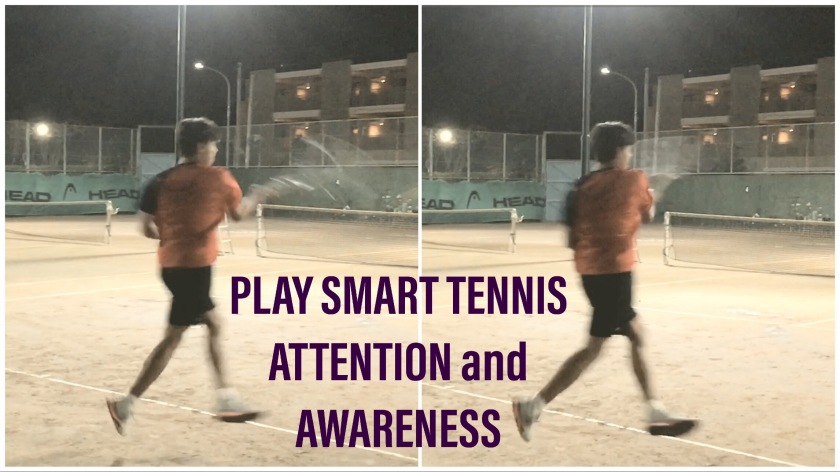The attentional focus in tennis, as it’s an open sport, is a changeable variable. There are numerous cues that are changing constantly. These cues can be represented as own, internal ones (feelings, thoughts and body parts position) and the external ones (environment, opponent, surface, weather etc). The momentum of the attention and awareness should be on the cues that are only important and related to that specific moment of the game. The constant changes in attention are demanding of the player to be fully mentally and physically aware of the momentum and situations in order to respond to the fast paced changes in environment.
Narrowing attention
Usually the problem occurs when the players are attentionally overloaded during the point situations. This means that they tend to pay attention on too many cues from the environment at the same time which creates many unnecessary thoughts in their minds. Narrowing attention on the most important cues during the point game (and before the point begins) will help them create as less thoughts (options about what to do and how) as possible, providing them with the simpler way to make a timely decision.
It’s very important that an athlete is trained to recognize the momentum of the cues as fast as possible so he/she can react to those cues as soon as they appear. Focusing on the proper cues can provide the player such advantage during the point game as the player can be aware of own thoughts (blocking the negative and turning them into positive), position faster towards to the incoming ball and departing ball, make faster decisions due to the opponent’s reactions and consequently, to be in complete control of both dimension of the game of tennis: space and time. Practices should be based on these kind of situations (read more about situational awareness)
The importance of the cues is changing rapidly so the attention of the player should be divided between the ball (incoming and departing trajectory, type of stroke, speed and pace etc), the opponent’s movement, body coordination, body parts usage (body language in general) but to the player’s own physical and mental momentum as well.
Performance/Physical awareness
For players to perform at their best and to react to the cues at the most efficient way, they need to have strong physical awareness. Physical awareness is related to how much players understand and feel their own body posture and body functions.
In order to execute the stroke, a player needs to be aware to hold the racquet loose, to be on the toes (enables the fast reactions to the incoming ball creating the momentum for a adequate weight transfer during the stroke), having good healthy posture (ensuring the proper angular rotation), breathing in proper rhythm (to relax the muscles, stabilize the core etc.).
The point of the understanding is not just the way the feelings are in general but the awareness of changes in their physical feelings due to the pressure situations (when they are winning or losing or playing the first point of the game or the crucial point to win the set). Feeling the changes and being aware that the changes occurred (due to losing the point a posture changed, due to doubtful thoughts about the next point the body weight is on the heels rather then toes etc) can be the most important explanation of the players behavior at the court and the future state of failure or success in the technical tactical execution of the strokes during the point.

